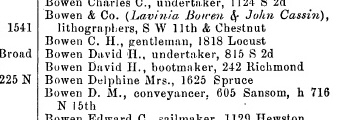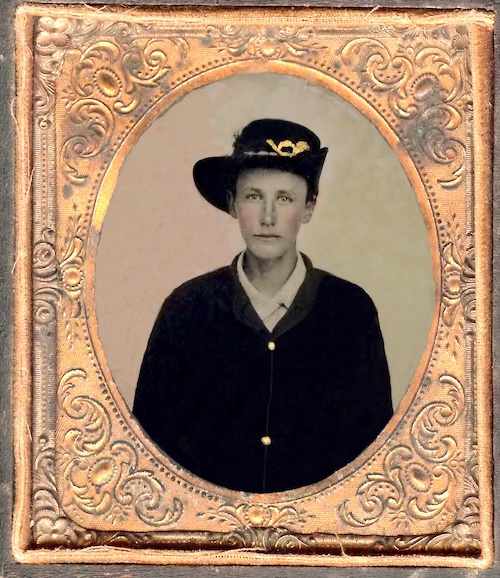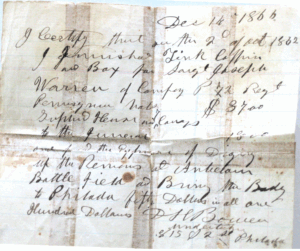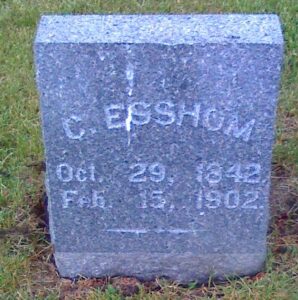William Tillotson, 14th Indiana Infantry
16 September 2025
On this day before the 163rd anniversary of the Battle of Antietam, here’s a look at the face of one of the soldiers who was there.
He’s William Tillotson, who was a 19 year old farm boy when he had this photograph taken, probably soon after he enlisted as a Private in the 14th Indiana Infantry in June 1861. The too-big hat and uniform make him seem even younger than he was, and but his gaze is direct and sober, even if a little unsure.
Young William was wounded at Antietam on 17 September 1862 by a gunshot to his leg, probably in combat at the infamous Sunken Road/Bloody Lane. He recovered to return to his unit but, sadly, was killed at Gettysburg in July 1863. He was 21 years old.
Notes
This stunning hand-tinted tintype is still in the family and was shared to his Findagrave memorial by Bill Marsh.
Sgt Warren returned to Philadelphia
11 September 2025
Sergeant Joseph Warren of Company P, 72nd Pennsylvania Infantry was killed at Antietam on 17 September 1862, probably in the furious combat in the West Woods there that morning. He was originally buried by his mates on the field, but his remains were returned home to his family in October.
This extraordinary document was kindly shared by descendant Mark Warren from the collection of his father George Cletus Warren Sr.
Notes
My transcription:
Dec 14 1866
I certify that on the 2d of Oct 1862 I furnished Zink (Zinc) Coffin and Box for Sargt Joseph Warren of Company P 72 Regt Pennsylvania Vols
$87.00
Supplied Hearse and 7 [C__s?] to the funeral 18.00
and for [___] the Purpose of Digging up the Remains at Antietam Battle field and Bring the Body to Philada [Philadelphia] fifty dollars. in all one Hundred Dollars.
D H Bowen
undertaker
815 S 2 St Philada
The author was David Hand Bowen (9 July 1813 – 27 January 1903).
Here’s Bowen’s entry from page 92 of McElroy’s Philadelphia City Directory for 1866, which is online from the Greater Philadelphia GeoHistory Network:

Participant #23,000: Clay Esshom
29 August 2025
We’ve just passed another milestone in the collection of Campaign participants at Antietam on the Web – now over 23,000 individuals in the database.
#23,000 is Private Clay Esshom of Company A, 14th Indiana Infantry, who survived a fearful gunshot through his body in combat at Antietam on 17 September 1862 – then a month shy of his 20th birthday. He was afterward a successful farmer and stockman near his boyhood home in Monroe County, Iowa to his death at age 59 in 1902.
Here’s his simple stone in Lovilia, IA; Findagrave photo thanks to the late Pat Kiser.



